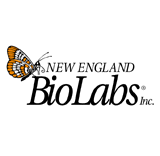The aim of our project is to create a biosensor that will detect BPA and other estrogenic compounds in the environment. BPA is a toxin that has been shown to leech from certain types of plastic that are used in everyday life. Animal studies have shown that BPA is linked to various forms of cancer and other detremental effects, which are likely to affect humans as well. Having a biosensor that can detect soil and water contaminated with BPA would be a useful tool indeed.
Our project relies on the mechanism by which BPA affects cells. BPA is an estrogenic compound; i.e. it has the ability to mimic estrogen. When taken into the cell, it can bind to the cytoplasmic estrogen receptors, and activate genes related to estrogen, tricking cells into thinking they are in an environment containing estrogen when they are not. By introducing the estrogen receptor into E.coli, we can use it to activate transcription of reporter genes to allow for easy visual identification of environments contaminated with BPA. Furthermore, the system can be used to activate genes for BPA metabolism, to help with bioremediation of contaminated areas.
Such a system would be very convenient to have as a 'sentinel plant'. We are developing the tools that would allow us to move our project into plants. These will comply with the standard iGEM parts requirements and will allow anyone to use any standard biobricks in plants, opening iGEM up to the plant realm.
Also, we plan on developing a "cell free" version of our system that would allow for cheap and quick detection of BPA in vitro. This could prove to be of much benefit to poorer or third world nations, which may not be able to afford the resources necessary to maintain the plant system, or where poor regulations regarding BPA have lead to a very high risk of environmental contamination.
Contact
You can reach us at igem@ualberta.ca!
Special Thanks
- Dr. Enrico Scarpella
- Dr. Perrin Beatty
- Dr. Robert Campbell
- Dr. Shelagh Campbell (no relation)
- Dr. Jon Dennis
- Mary A De Pauw
University of Alberta's Protocols
| Biobrick Optimization in a System
Who Visits Our Site







|
 "
"

 ]
] ]
] ]
] ]
] ]
]



